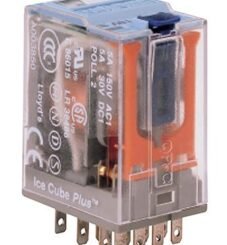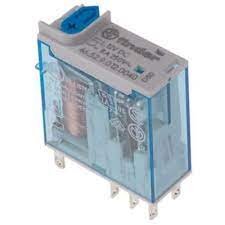Latching and Non Latching Relays
Relays are electronic devices that are used to control and switch circuits. They work by using an electromagnetic field to switch on and off circuits, and can be used in a variety of applications such as automation, control systems, and power systems.
There are different types of relays available in the market, and among them, the two main types are latching and non-latching relays. In this blog, we will discuss the differences between these two types of relays, and also take a closer look at latching relays, their types, and why they are used.

What is the Difference Between Latching and Non-Latching Device?
Latching relays and non-latching relays differ in their mechanism of operation. A non-latching relay is an electromechanical device that requires a continuous flow of electrical power to stay on or off. This means that when the power supply is interrupted, the relay will switch off.
On the other hand, a latching relay is a device that does not require a continuous flow of electrical power to remain in a specific state. Once a latching relay is switched on, it will remain on until another input signal is received to switch it off.
In simpler terms, a latching relay is like a light switch that remains in the “on” or “off” position until someone switches it to the other position, while a non-latching relay is like a light switch that only stays “on” while the button is being pressed.
What is Latched Relay?

A latching relay, also known as a bistable relay, is a type of relay that maintains its last state even when the power is removed. It requires an input signal to change its state, and once it has changed, it will remain in that state until another input signal is received to change it again.
The latching relay is a popular choice in applications where power is limited, or where it is necessary to conserve power. Since the latching relay does not require continuous power, it is an ideal choice for battery-powered systems or where the power supply is intermittent.
What is the Difference between Latching and Impulse Relay?
An impulse relay, also known as a momentary relay, is a type of relay that requires a constant flow of electrical power to remain in a specific state. It is designed to respond to a short pulse of electricity, and once the pulse ends, the relay will switch back to its original state.
The main difference between a latching and impulse relay is that the former does not require a continuous flow of electricity to remain in a specific state, while the latter does. A latching relay can remain in its last state even after the input signal has been removed, while an impulse relay will only stay in its current state as long as the input signal is present.
Why use a Latching Relay?
There are several reasons why a latching relay may be preferred over a non-latching or impulse relay. One of the main advantages of a latching relay is that it requires less power to operate, making it ideal for battery-powered or low-power systems.
Another advantage of a latching relay is that it can be used in applications where it is necessary to maintain a particular state, such as in alarm systems or motor control systems. Since it does not require a constant flow of electricity, it is also useful in situations where there is limited power or where power is intermittent.
What Does a Latching Device Do?
A latching device is any device that can maintain its current state without the need for a continuous flow of electrical power. This includes latching relays, but can also refer to other types of devices such as switches and solenoids.
A latching device works by using a mechanical mechanism that “latches” into place when the device is activated. There are different types of latching contacts, including bistable contacts and monostable contacts. Bistable contacts maintain their state without any external power, while monostable contacts require external power to maintain their state.




